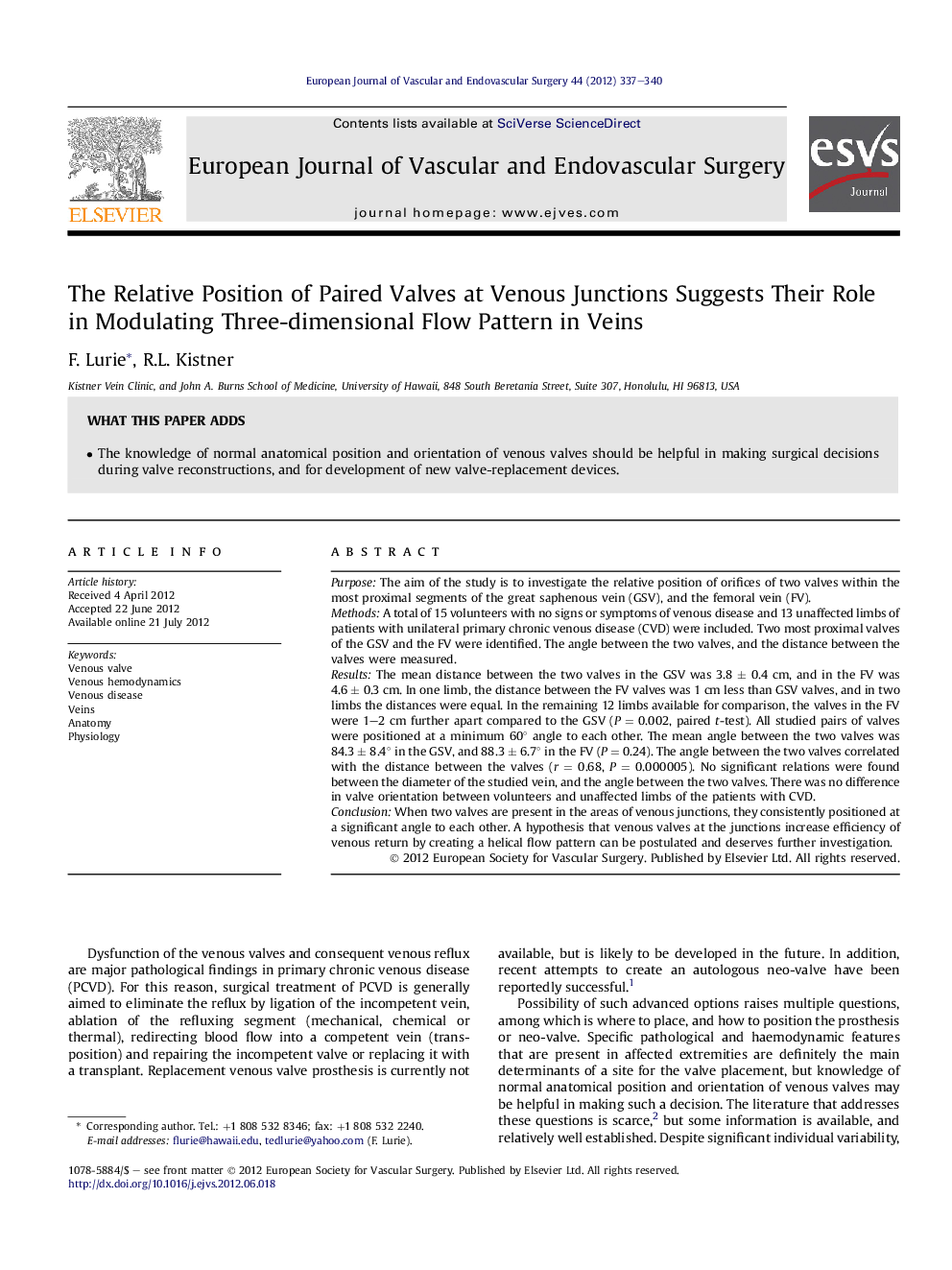| کد مقاله | کد نشریه | سال انتشار | مقاله انگلیسی | نسخه تمام متن |
|---|---|---|---|---|
| 2912536 | 1575474 | 2012 | 4 صفحه PDF | دانلود رایگان |

PurposeThe aim of the study is to investigate the relative position of orifices of two valves within the most proximal segments of the great saphenous vein (GSV), and the femoral vein (FV).MethodsA total of 15 volunteers with no signs or symptoms of venous disease and 13 unaffected limbs of patients with unilateral primary chronic venous disease (CVD) were included. Two most proximal valves of the GSV and the FV were identified. The angle between the two valves, and the distance between the valves were measured.ResultsThe mean distance between the two valves in the GSV was 3.8 ± 0.4 cm, and in the FV was 4.6 ± 0.3 cm. In one limb, the distance between the FV valves was 1 cm less than GSV valves, and in two limbs the distances were equal. In the remaining 12 limbs available for comparison, the valves in the FV were 1–2 cm further apart compared to the GSV (P = 0.002, paired t-test). All studied pairs of valves were positioned at a minimum 60° angle to each other. The mean angle between the two valves was 84.3 ± 8.4° in the GSV, and 88.3 ± 6.7° in the FV (P = 0.24). The angle between the two valves correlated with the distance between the valves (r = 0.68, P = 0.000005). No significant relations were found between the diameter of the studied vein, and the angle between the two valves. There was no difference in valve orientation between volunteers and unaffected limbs of the patients with CVD.ConclusionWhen two valves are present in the areas of venous junctions, they consistently positioned at a significant angle to each other. A hypothesis that venous valves at the junctions increase efficiency of venous return by creating a helical flow pattern can be postulated and deserves further investigation.
Journal: European Journal of Vascular and Endovascular Surgery - Volume 44, Issue 3, September 2012, Pages 337–340